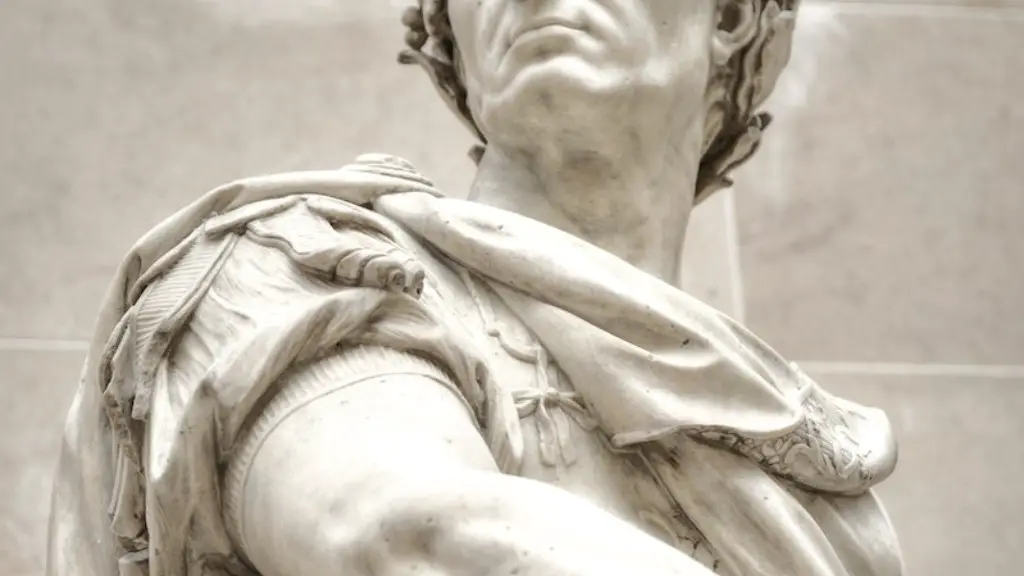Adoption in ancient Rome has long been documented, although Roman legal and moral codes surrounding the institution are still being pieced together by historians. Adoption in Rome was complex and varied, and could be based on marriage, family ties, religion, economics, or politics. Understanding the intricacies of adoption in Roman society can provide insight into a past culture, as well as offer new perspectives on contemporary adoption.
The Roman historian Plutarch first wrote about adoption in the late 1st century AD. According to his accounts, adoption was used primarily for economic reasons. Fathers in ruinous debt hoped that adopters could provide for their children’s future, and unmarried women sought financial resources for marriage settlements. Adoption also served as a political tool, allowing powerful families to develop and maintain alliances. Adoption from one’s own family was also common – children left orphaned by death were sometimes adopted by other relatives.
The Roman adoption process followed certain conventions, guided by the paterfamilias figure. The head of the family had full rights to choose the adoptee, and formal adoptions could take place between two living parties, or through a ritualized posthumous adoption. Legally, when monies were exchanged, or a guardian appointed, it regarded as a public adoption binding on parties of the agreement. An adoptee passing through the Roman adoption process emerged as a fully accepted family member – adult adoptees could inherit and pass on their inheritance, and they had the same legal standing and rights as natural-born children.
The social implications of adoption in ancient Rome are still debated by scholars. Some historians have suggested that Roman adoption laws treated adoptees as economic commodities, a form of social currency to be bartered amongst powerful political players. Others argue that Roman adoption laws allowed for a flexibility and fluidity of family ties, something that was not as common in other cultures of the time period. Roman adoption documents also show a variety of situations and implications, from difficult familial arrangements to romantic couplings. It is clear that Roman adoptions could be based on a variety of motives, from the economic to the emotional.
Adoption practices in ancient Rome were quite varied and complex. Roman fathers had the legal right to determine their child’s fate, and there were a range of different motivations for adoption. Adoption could be a financial decision or a means of creating powerful political alliances. It could also provide emotional security and stability. Roman adoption documents demonstrate the complexity and range of social implications of the practice, as well as the flexibility of Roman law.
Benefits of Roman Adoption
The primary benefit of adoption in ancient Rome was that it could protect a child’s economic position. For example, if a father died in debt, adoption could offer his children greater financial security and stability. The adoptive father could pay the debts, thus protecting the children from any consequences of those debts. Additionally, adoption could provide a much-needed economic boost to families in poverty. Adoption could also help unmarried women gain a more secure financial footing by entering into a marriage settlement. Thus it could help provide more options for women in search of economic and emotional security.
The social benefit of adoption was also immense. In some cases, adoption allowed powerful Roman families to maintain their existing political dominance. Adopting one’s kin was also an act of emotional support, providing emotional safety and protection. Adoption could also offer protection and emotional security to children who had been orphaned. Roman adoption laws and practices offered a framework, ensuring that those adopted could inherit and pass on an inheritance and be recognized as a family member. Adoption in Roman society offered both economic and social benefits.
Considerations of Roman Adoption
Whilst Roman adoption practices can appear idealized, there were a number of issues to consider regarding the practice. The fact that the head of the family had complete rights over the adoptee could mean that adoption was not always an act of altruism. Fathers could be driven by financial, political, or emotional motives, and this could lead to complications further down the line. Additionally, there were few protections in place for adoptees in Roman law, meaning that they could be taken advantage of in familial power struggles, or saddled with debt or unwanted marriage arrangements. Some experts suggest that Roman adoptions had the potential to be exploitative and damaging, as well as beneficial.
Whilst adoption was a way of protecting a family’s economic and social interests in the Roman world, it was also a way of binding people together. Adopting relatives was a common way of expressing family solidarity and support, and adoption provided a way for orphans and other vulnerable individuals to find a safe and loving home. The complex web of motives underlying Roman adoption practice means that it is essential to look at each instance of adoption on its own merits, and consider the implications for the individuals involved.
Adoption in the Modern World
The practice of adoption has evolved since the days of the Roman empire, but still carries traces of its past in contemporary law and culture. Family law in many countries, including in some areas of the United States, still adheres to the ancient Roman principle of patria potestas, granting parents total authority over their children. In other parts of the world, such as South America, adoption techniques used by the Romans are still practiced in order to ensure legal and social protection to children.
Whilst contemporary adoption norms are very different from those of the Roman world, they still employ some of the same principles. Adopting institutions often require that the child be provided with a stable and secure economic position, but also look for secure social ties – qualities that Roman adoption practices sought to provide as well. Adoption in the present day is driven by many of the same principles – providing economic stability, creating social protections for children, and allowing children to enter into a secure and loving home – as those of ancient Rome.
History of Ancient Rome Adoption
The history of adoption in ancient Rome is an important aspect of the culture’s past. Roman adoption laws and practices allowed for a range of different motives, from financial stability to political or emotional ties. Adoption served as a way of ensuring a child’s economic security, creating powerful alliances, and allowing for the formation of strong familial ties. Roman adoption practices contained complex social implications, and although the practice has evolved since then, the influence of its past is still felt in contemporary law and culture.
Adoption Payment
Payment was often used as a way of formalizing agreements during the adoption process. Typically, Roman adoptions would involve a dowry, or a sum of money that would be exchanged for the rights to the adoptee. These payments could range from small sums of money to larger sums of land or other property. In some cases, a guardian might be appointed to take legal guardianship of the child and ensure his or her well-being. This could also be a sign of the formal adoption agreement and could be recorded on legal documents.
Although the use of money in Roman adoption might appear to be exploitative, it was actually a way of formalizing the adoption process and ensuring that the child’s rights were respected. The use of money could also ensure that adoptive families had the financial resources to provide for their adopted children, and to ensure their economic security. Thus, whilst it could appear that the exchange of money was a way of commodifying adoption, Roman legal documents suggest it was a way of formalizing agreements, rather than exploiting them.
Rights of Adoptees
Adoptees, in the Roman world, had full legal rights to their inherited property and could bequeath it in the same way as natural children of the family. This was specifically stipulated in the Lex Julia, dated 5 BC, and was a mark of the stature of adoptees in Roman society. More broadly, Roman adoption laws allowed adoptees to inherit their adopted father’s property, maintain guardianship over their own natural children, and engage in property transactions. Adoptees had the same legal privileges as natural-born children and were able to fully participate in the society.
Legally, adopted individuals had the same protection and military rights as natural children. Adoptees, for example, could enter the Army, and refer to their adopted family in legal documents. Adoptees could also marry, and the marriage, if contracted with another adoptee, would have the same legal standing as one contracted between two natural-born members of the family. This demonstrates the legal standing of adoptees in Roman society and the protection they were provided by Roman law.
Roman Adoption in Popular Culture
Roman adoption also appears in much of the popular culture of today. Films, books, and television shows often depict scenes of Roman adoption, often focused on its amusing aspects. Examples of this include the family adoption plot of the Disney film ‘The Emperor’s New Groove’ or the scene of adopted Roman children in ‘Caligula’. Roman adoption is also present in the popular HBO series ‘Rome’, and in the novel ‘I, Claudius’. These cultural depictions of Roman adoption often focus on the humorous or farcical aspects, glossing over much of its legal and ethical complications.
Whilst Roman adoption has provided interesting plot lines for modern films and books, experts suggest that a careful examination of Roman adoption practices can provide valuable perspectives on contemporary adoption law and norms. Roman adoption practices demonstrate the complexity and importance of family law and provide insight into the power structures of ancient Roman society.
Conclusion
Roman adoption laws and practices can provide valuable perspectives on contemporary adoption norms. Roman adoption provided legal and social protections to adoptees, creating a flexible framework where a child could become a fully accepted family member. The Roman adoption process was complex and varied, and depending on the circumstance could be motivated by a range of factors, from politics to economics to emotion. Contemporary adoption laws in many countries still adhere to the principles of patria potestas, whilst the legacy of Roman adoption is still evident in popular culture. Examining the legal and cultural implications of Roman adoption can be an important way of understanding its past and presenting.





1 thought on “What To Write About Ancient Rome Adoption”